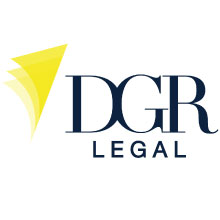Like Blood Pressure, Your Copy and Printing Costs Should be Checked Regularly
By Joe Donohue
Unless you’ve implemented a print policy in your office, there’s a good chance your print volumes and costs may be higher than you think. Like high blood pressure, high copy and print expenses left unchecked can have a negative impact on the overall health of your company. Even in today’s economic climate that demands expense visibility and control, the avoidable waste associated with office printing is eye opening, to say the least!
Utilizing the fact-based data collected from print assessments we’ve completed with hundreds of customers looking to print smarter and print cheaper, office printing remains a gaping hole of opportunity for most finance and IT professionals.
Below are some office printing statistics that have caused more than a few business leaders to rethink their print strategy.
90% of companies don’t know how many printers they have or how much they spend on print. Do you know how many printers you have or how much you spend on print? This statistic was released by the Gartner Group a few years ago and remains remarkably accurate across all industries and sizes of business. Shared ownership of hardcopy output between finance (who buy the MFPs) and IT (who buy the printers) has made it difficult for organizations to track and manage their overall print spend.
Many lease agreements are incredibly bifurcated, and although you may think you are getting a great deal, you probably are not. What customers should do is insist that the price of the photocopier and the service charges are shown separately in any agreement. And never agree to a high minimum charge, as it is not necessary and offers no financial benefit.
Print is typically the third-highest business operating expense behind rent and payroll. The typical office worker prints 10,000 pages per year at an average annual cost of $725.00. Do you have usage restrictions for your people to follow? With no basic guidelines on what, where or how many pages an employee can print, it should be no surprise if opportunity is found for improvement.
Look out for the “print audit”. These audits allow the salesman to get a foot back in the door, so be wary of print audit tools, as some may not be entirely accurate, leading to exaggerated print volumes and, in turn, higher contract costs for the end user.
While some photocopiers can save money on printing costs, quite often the print audit is used to deliver a so-called “service package” that once again fails to protect the customer and usually results in high hidden charges per print. This ultimately leads to a contract that has companies/customers tied to a minimum volume, linked to a fixed quarterly charge, which just like many “copy plans” of old, can lead to dramatically overcharging the customer for volumes they may never use.
Take these tips with you, and happy printing!!!
Joe Donohue is Vice President - National Accounts of Copywatch Inc. Joe has worked in financial services for over 25 years and was responsible for capital raising and cost savings for both private and public companies. Joe may be reached at [email protected].





















